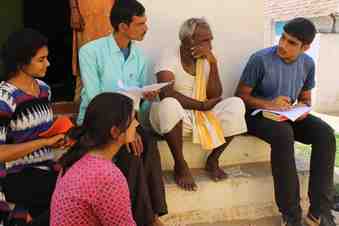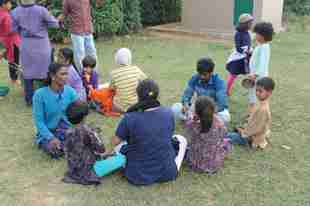KAIGAL EDUCATION AND ENVIRONMENT PROGRAM
KRISHNAMURTI FOUNDATION INDIA
KAIGAL, THOTTAKANAM POST, CHITTOOR DISTRICT, A.P

REPORT FOR THE YEAR – JUNE 2018 – MAY 2019
Table of Contents
2.2 Environment Education Programs
2.3 Community resource centres
3 Building Institutional Linkages
3.1 Orientation for the Ministry of Environment and Forests
3.2 Showcased on International Biodiversity Day
3.3 Kaigal becomes a field station for research
3.4 Interactions with other educational institutions
4 Documentation and publications
Introduction
The Kaigal Education and Environment Program continued its journey of an integrated approach to education and conservation through community participation and empowerment. The conservation activities of the program have been strengthened further with KEEP now being recognized as a resource institution by the National Biodiversity Authority and the Andhra Pradesh State Biodiversity Board.
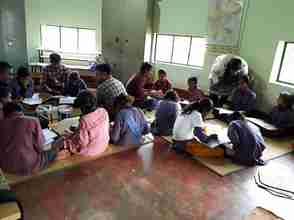
Student reviews at Kalligutta School
Entering their 15th year of operation, the Sanctuary Schools have remained relevant and responsive to the learning needs of the tribal communities. With a current strength of about 45 children from the ages of 3 years to 16 years – in Mugilupodalarevu and Kalligutta tribal villages – the schools serve these communities providing an empathetic educational environment, respectful of and sensitive to the local context.
Education
Sanctuary Schools
More students completing their school education
Over the years the schools have grown in their operations in Kalligutta and Mugilupodarevu. All children above 3 years of age in these villages come to schools. At the end of Class 5 (the level upto which we are registered) many of them continue their studies by joining a Government High School – day school or residential. Some older children in the villages – who had not continued their education with government schools or had dropped out – enrol with the National Institute of Open Schooling to finish their Class 10 and 12. These students are mentored by the teachers to complete the exam and some continue their education through vocational, diploma or college degree programs. We have received positive feedback from the government high school in Kadapanatham where our students are enrolled for Class 6.
New curricular inputs
The primary objective of the Sanctuary Schools is to provide a meaningful and relevant educational experience for the children from the communities, without removing them from their context. The students learn in mixed age groups and lessons are planned by the teachers according to the levels of the children.
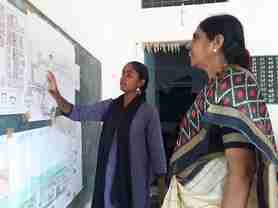
Chandrakala, our oldest student, explaining the mapping exercise to the Kadapanatham High School HM
In addition to mathematics and Telugu instruction, this year saw the introduction of spoken English for the students, with the use of multimedia resources. The older students are taking a lead in this aspect – learning and teaching the young ones.
Language immersion workshops for children where students worked with different digital resources for building their language learning; students and teachers produced short story books in Telugu at the end of this workshop.
A workshop was also conducted for teachers to strengthen their knowledge of the local biodiversity and they documented the environment education modules implemented in the schools.
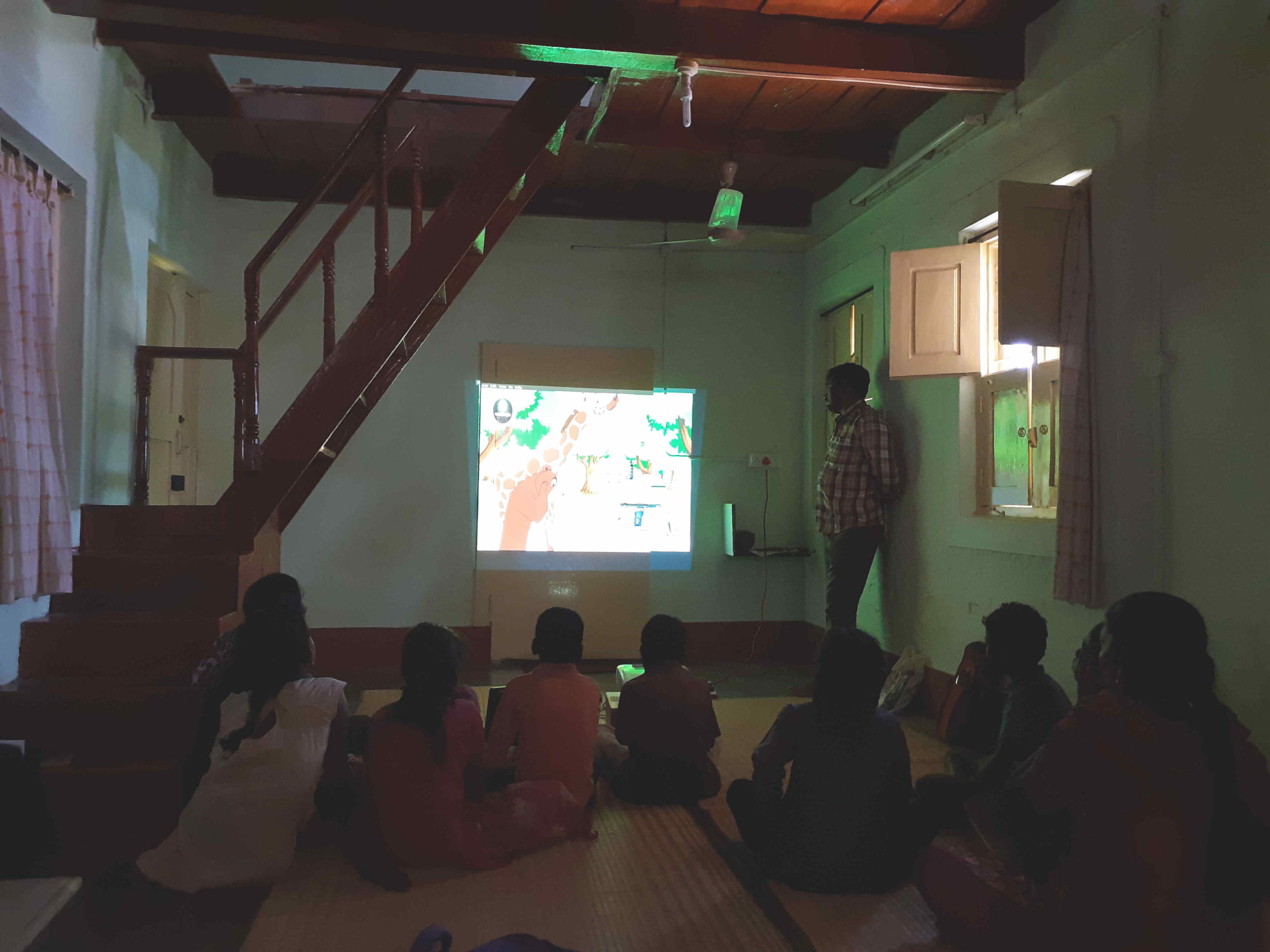
Students doing collaborative story telling from a picture
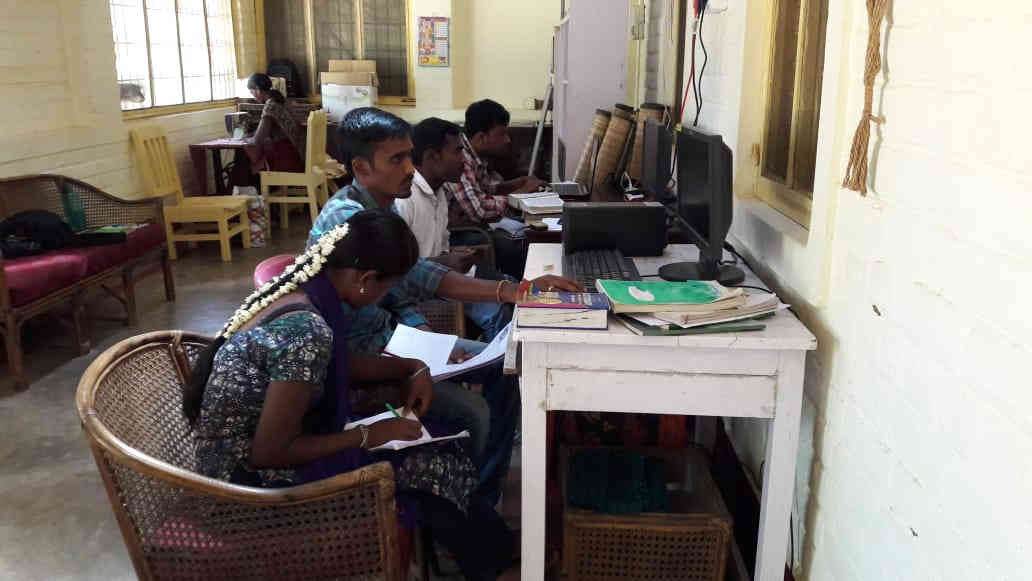
Teachers digital literacy capacity building
Science Day 2018
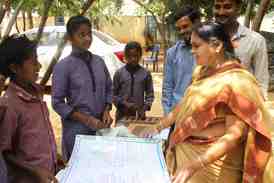
Explaining the biodiversity documentation to the MEO
As a part of our initiative to bring schools and communities together for science and environment education, a science day was organized in two clusters during November 2018. Students from The Valley School and several government schools also participated. The students from the Sanctuary Schools presented many hands-on projects as well as some investigative projects. The event was well-attended by local schools, community members, education department officials and the press; the Eenadu carried a news coverage of the event.
Environment Education Programs
The environment education program (EEP) began in the year 2007 with the objective of sharing with schools and students, the possibilities, challenges and strategies for a sustainable and ecologically responsible way of life. Bringing communities together, introducing students to different knowledge systems, creating new contexts for learning and allowing students to simply experience nature are the key ideas behind this program.
|
|
|
During this year, 6 schools have participated in the program so far including students from Class 1-12. Activities taken up included farming, survey of farming practices including participation in the Zero Budget Natural Farming introduced by the Government of Andhra Pradesh, and interacting with the communities and students in the tribal villages.
Community resource centres
We have observed over the years that it is important to educate the community as well for a sustained educational attainment for the students. In the increasingly market-driven development model, tribal communities need to be empowered to evaluate information and make decisions; all of which require functional levels of literacy and numeracy.

Community resource centre at Kalligutta
The community members have also expressed and articulated such a need for their learning. During this year, the community resource centers began to operate in the two schools. Using a variety of methods – story telling, digital resources and discussion, we have been working with the community on building awareness of different social, economic, and political issues besides building their literacy and numeracy. A skill building program is also being developed for the centres.
During this year, a new building was constructed in the Kalligutta school was constructed for anchoring the community education program and the pre-school program. This building was funded by Round Table, Bengaluru and was inaugurated in June 2019.
Building Institutional Linkages
Building linkages and sharing learning across similar endeavours is something we recognize as important. We have consciously made efforts to build linkages across academia, government and non-government sectors. Some of our efforts in this direction are described below.
Orientation for the Ministry of Environment and Forests
With a new initiative from the National Biodiversity Authority, an interaction with the local Biodiversity Management Committees (BMC) was organized at the Kaigal Conservation Centre in July 2018. Members from the Ministry of Environment and Forests and the NBA and Andhra Pradesh State Biodiversity Board interacted with the communities as well as BMC members. The efforts of the Kaigal Education and Environment Program in mobilizing communities and establishing the formation of BMC was highly appreciated by the MOEF and the NBA.
Showcased on International Biodiversity Day
The livelihood program was showcased in a high profile event organized by the National Biodiversity Authority, in Chennai, in May 2019. This event was inaugurated by the Vice President of India, Shri Venkaiah Naidu and the livelihood program was one of the few community based organizations invited to participate in the event.
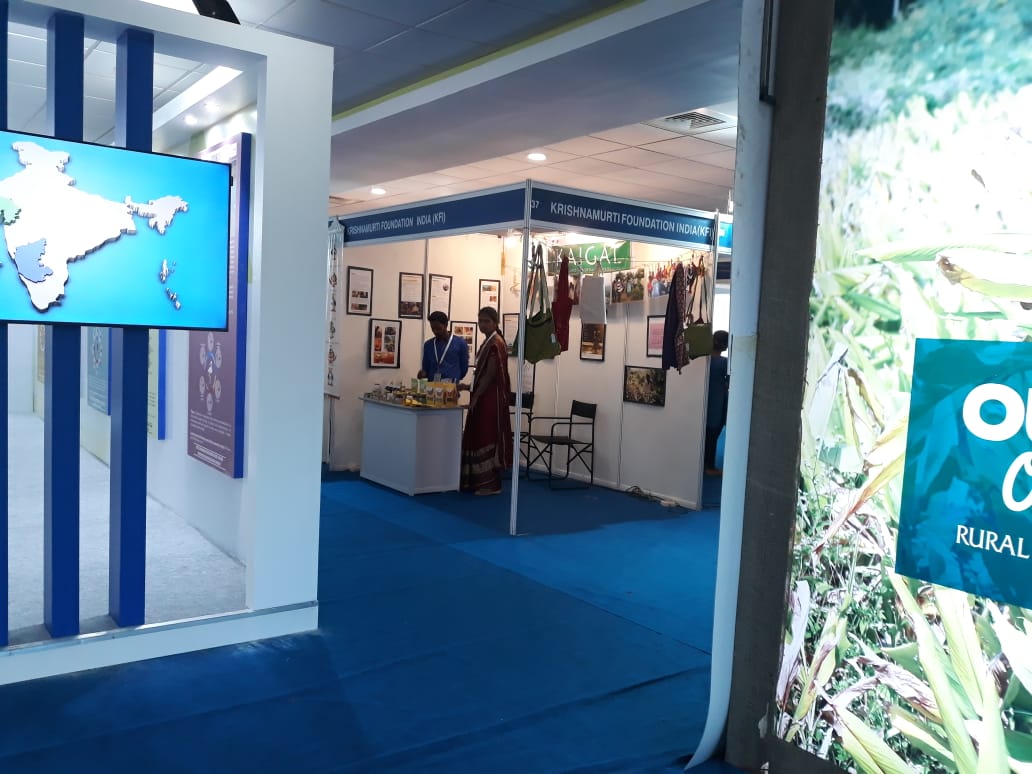
International Biodiversity Day
Kaigal becomes a field station for research
Under a partnership with the Indian Institute of Science Education and Research, the Kaigal Conservation Centre has become a centre for field research for their masters and doctoral students. The Centre has also been hosting students from the Lund University (Sweden), for field research activities. The team members from the KEEP support the research team in conducting field investigations, interactions with the communities as well as providing logistical support for the research team.
Interactions with other educational institutions
Sriranjani was invited to conduct a session on “Assessments as a Reflective Tool” for the teachers of the Vedavalli Vidyalaya group of schools in February 2019. Sudha was invited to interact with the students and faculty of the Islamaiah College at Vaniyambadi on “Role of Educational Institutions in Biodiversity Conservation” in February 2019. This was part of an event organized by the National Biodiversity Authority.
Documentation and publications
- Vikalp Sangam, in collaboration with Srishti School of Design did a video documentation of the KEEP, showcasing our key idea of educating communities for conservation. The video can be found here – https://www.youtube.com/watch?time_continue=39&v=sTPng6iWnTo
- A paper titled “A Humane Approach to Designing a School in and for Tribal Communities” was published in the journal “Voices of Teachers and Teacher Educators(VTTE)” of NCERT, in February 2019, The paper describes the philosophy and working of the Sanctuary Schools and can be accessed here – http://ncert.nic.in/publication/journals/pdf_files/vtte_feb_2019.pdf
- KEEP was recognized as one of the 6 best practices of social change from among 95 interventions, by the Azim Premji University, as part of their initiative called Stories of Change. Our intervention will be published as part of a forthcoming compendium to be brought out by the University.
Outcomes
- Schools are continuing to function regularly; the community members value the school. The education department has become more supportive of this initiative. The government education system is willing and open to integrating our ideas and curriculum for environmental education, science and English into the government primary and high schools in the area.
- Enthused by the learning of the students, the community members have started on a learning program for themselves; this is a clear sign of the value perception about education for themselves as well as for their children.
- Establishment of the KEEP program as a model of biodiversity conservation with the NBA and APSBB
Plans for the current year
- Development of community learning and resource centres in select villages around the area. These centres will focus on building functional literacy, numeracy, citizenship education as well as build skills for livelihood. It is the vision of these centres that they become spaces for continuous learning for the community where they learn to engage with and act on different issues around health, conservation, livelihoods and education.
- Building the environment education program to reach more institutions (educational and non-educational) so as to build a larger awareness around issues of conservation and education.
- Share our experiences and resources from early childhood education and share it with the organizations working on early childhood education in the area
- Deepen our linkages with the APSBB and strengthen the biodiversity management committees set up in the Panchayats
- Working with the educational administration and structures within the government to share some of the innovative approaches tried in the Sanctuary schools with government schools.
- Partnering with other organizations to bring our ideas and experiences of holistic education to more and more institutions within the government education system.
- Digital documentation of the community knowledge and practices so as to preserve them for future generations.

